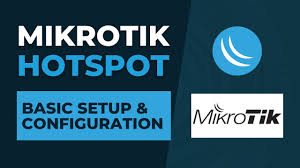-
- MikroTik HotSpot and Captive Portal Innovations
- Understanding MikroTik HotSpot and Captive Portal
- Configuration Steps
- Step 1: Initial Setup
- Step 2: Create a Bridge Interface
- Step 3: Configure IP Address
- Step 4: Set Up DHCP Server
- Step 5: Configure HotSpot
- Step 6: Customize Captive Portal
- Practical Examples
- Example 1: Café HotSpot
- Example 2: Educational Institution
- Best Practices
- Case Studies and Statistics
- Conclusion
MikroTik HotSpot and Captive Portal Innovations
In today’s digital age, providing seamless internet access is crucial for businesses, educational institutions, and public spaces. MikroTik’s HotSpot and captive portal solutions offer innovative ways to manage user access while enhancing user experience. This guide delves into the configuration, practical applications, and best practices for implementing MikroTik HotSpot and captive portal, ensuring you can leverage these tools effectively.
Understanding MikroTik HotSpot and Captive Portal
The MikroTik HotSpot feature allows network administrators to control user access to the internet through a login page, known as a captive portal. This setup is particularly useful in environments where user authentication is necessary, such as cafes, hotels, and schools. By implementing a HotSpot, organizations can manage bandwidth, track user activity, and even monetize internet access.
Configuration Steps
Step 1: Initial Setup
Before configuring the HotSpot, ensure your MikroTik router is set up and connected to the internet. Access the router’s interface via Winbox or WebFig.
Step 2: Create a Bridge Interface
- Navigate to Bridge in the left menu.
- Click on Add to create a new bridge.
- Name the bridge (e.g., bridge-hotspot) and apply the settings.
Step 3: Configure IP Address
Assign an IP address to the bridge interface:
/ip address add address=192.168.88.1/24 interface=bridge-hotspotStep 4: Set Up DHCP Server
- Go to IP > DHCP Server.
- Click on DHCP Setup and select the bridge interface.
- Follow the prompts to configure the DHCP settings.
Step 5: Configure HotSpot
Now, set up the HotSpot:
/ip hotspot setupFollow the wizard to configure the HotSpot, including:
- HotSpot interface (select the bridge).
- Address pool for HotSpot users.
- DNS settings.
- Login page settings.
Step 6: Customize Captive Portal
To enhance user experience, customize the captive portal page:
- Navigate to IP > Hotspot > HTML.
- Edit the login.html file to include your branding and messaging.
Practical Examples
Example 1: Café HotSpot
A local café can use MikroTik HotSpot to provide free Wi-Fi to customers. By requiring users to log in via a captive portal, the café can collect customer data for marketing purposes and offer promotions based on user behavior.
Example 2: Educational Institution
Schools can implement a HotSpot to manage student internet access. By requiring authentication, schools can ensure that students use the internet responsibly and can monitor usage patterns for better resource allocation.
Best Practices
- Regularly update MikroTik firmware to ensure security and performance.
- Use strong passwords for HotSpot authentication to prevent unauthorized access.
- Monitor user activity and bandwidth usage to optimize network performance.
- Implement a user-friendly captive portal design to enhance user experience.
Case Studies and Statistics
According to a study by the Wireless Broadband Alliance, 70% of users prefer free Wi-Fi in public spaces, and 60% are willing to share personal information for access. Implementing a MikroTik HotSpot can help businesses capitalize on this trend by providing a secure and efficient way to manage user access while gathering valuable data.
Conclusion
MikroTik HotSpot and captive portal innovations provide powerful tools for managing internet access in various environments. By following the configuration steps outlined in this guide, leveraging practical examples, and adhering to best practices, organizations can enhance user experience while maintaining control over their networks. As the demand for reliable internet access continues to grow, implementing these solutions will be essential for staying competitive and meeting user expectations.
